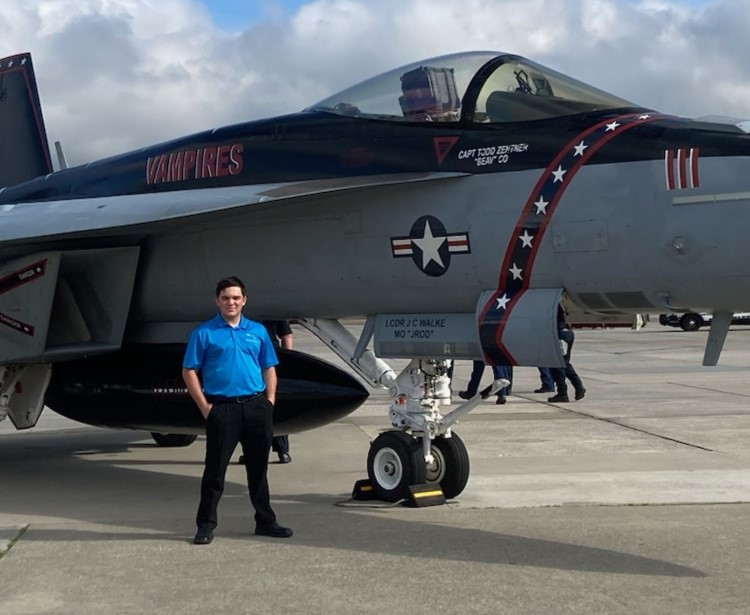Golden Lion pilots fly high
Students work on earning their pilot’s license
Junior Lyle Pinson stands in front of a fighter Jet. Pinson is the founder of the Aviation Club at St. Pius X and is currently training to become a pilot.
December 9, 2022
It’s a bird! It’s a plane! Yes, it is a plane, and it’s being flown by a St. Pius X student pilots!
Numerous students at St. Pius are in the process of becoming a licensed pilot, including, junior Lyle Pinson and his sophomore brother Luke, and sophomores Antoinette Gomes, Elise Cowles, and Joey Telford.
Lyle, founder of the Aviation Club, explained one reason why so many teenagers are interested in flying.
“It’s such a great time to become a pilot,” he said. “Flying is not that old of a profession, so all the first guys to line up for it are just about out the door, and there is going to be a massive vacuum for pilots right now.”
The process of becoming a pilot is somewhat like earning a learner’s permit or driver’s license. The first step is passing a written test to earn a student pilot’s license, which allows you to fly with an instructor. After lots of training and passing another written test as well as a flight test, a person can obtain their solo pilot’s license, which allows them to fly alone.
“The only problem is it’s about 10 years worth of training. So, it’s a steep learning curve, but the top of that curve is practically a plateau,” Lyle said.
Cowls is currently training with a flight instructor.
“There’s parts that are stressful, like communicating with the tower and ground people,” she said. “I’m always super stressed out that they’re going to be annoyed by how slow I am at it because I’m new to it.”
Lyle agreed that communicating with the air traffic controllers is difficult, but there are a lot more positives than negatives.
“You can’t beat the view, especially at night over a large city. It’s great,” he said.
Flying is quickly developing and does not seem to be slowing down any time soon.
“Now the technology is so advanced that the airplane autopilot can get within three inches of where it needs to be on the runway. In Japan, they’re already landing and taking off by themselves. At this point, you’re basically getting paid six figures to sit and look at a panel all day long,” Lyle said.
The next time you see a small plane in the sky, you never know, it could be one of our very own student pilots.





